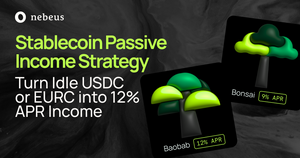Whether you are a blockchain veteran, or new to cryptocurrency investing, it will not have escaped your notice that crypto is highly volatile. Simply by looking at 2021 in review we see a picture of explosive growth followed by a precipitous decline, with Bitcoin doubling and halving again in price, multiple times. So, you may ask: What is it about crypto that makes it so volatile?
Crypto is still an emerging market
It may not feel it to blockchain veterans, but cryptocurrencies are still a relatively new phenomenon. Barely 13 years out from Satoshi Nakamoto’s white paper, and the subsequent emergence of Bitcoin, crypto is still in the process of gaining public recognition, trust, and the regulatory attention that accompanies it.
Ethereum, the second most widely-known network, was only launched 7 years ago, while uncountable new currencies and protocols are launched every year. It may not feel like it to early crypto adopters, digital libertarians who dreamed of a financial wild-west unencumbered by central banks and government influence, but we are still in the heady early days of crypto.
The implications for this are manifold, and one of those implications is that volatility, for now, is baked in.
Crypto has no controlling power
Fiat currencies are by no means immune to volatility. The Argentine Peso has experienced major devaluation in comparison to other major currencies over the past three years, with $1USD worth 40Pesos in summer 2019 and almost 200 barely a year later. Even within this trend, there have been daily and weekly price shocks, with the currency gaining and losing as much as 25% of its value within weeks. The British Pound Sterling, meanwhile, dropped 10% in a matter of hours in the wake of the 2016 Brexit referendum.
However, fiat nonetheless remains much more protected from volatility than cryptocurrencies for a number of reasons.
Firstly, they are protected by central banks and the various macroeconomic tools that they can wield. These can intervene using such tools on behalf of their currency to impact their value against other fiat currencies, and as a rule, central banks do not like volatility. Cryptocurrencies are designed not to require central bank control; in fact, to be more emphatic, they were created in part to reject a single entity having the ability to control the supply and value of the currency. This means that there is no central mechanism there to protect, in part, against volatility.
In short, crypto lacks ‘a controlling agency’.

Building trust in Crypto
Secondly, there is the issue of trust. Where a government can build trust over decades and centuries through its policies, its commitment to paying its debts, and the country’s national security and its internal order, and stock markets and the companies floated on them can do similar with prudent management over years and decades, crypto networks and currencies do not have that luxury.
This in part emerges from the matter of not having a controlling agency as mentioned above. It also derives from the fact that crypto is still very, very new– even Bitcoin, as the oldest currency, is half a decade younger than Facebook, which is itself still experiencing extreme volatility in the price of its stock.
Crypto platforms have not had enough time yet to prove themselves in such a way that investors are willing always to endure short-term movements in the price. While trust in the major networks, such as Bitcoin, Ethereum, and Cardano is growing as they recover from repeated market cycles, newer currencies do not have that trust. This is also fuelled, in part, by the long list of cryptocurrencies and platforms that have folded, from the infamous BitConnect to Emercoin. To date, according to morbid tracker Coinopsy, nearly 2,400 dead cryptocurrencies.
Equally, exchanges themselves are still in the process of building trust. Early adopters will remain with trepidation the failings of Mt. Gox and, more recently, the BitGrail hack.
As scamcoins and redundant applications are shaken out, and long-term projects prove their worth, it is likely that some of the present volatility will also smooth out.
Also, if you want more control over your investments get a Zero Risk loan with Nebeus.
‘Naive’ Investors
Cryptocurrencies, NFTs and other blockchain platforms have traditionally been a young person’s game. For many investors, and particularly early adopters of crypto, cryptocurrencies have been their introduction to the world of investing, speculation and financial planning. This has been for a number of reasons, key amongst which is accessibility. Until the rise of app-based investing, with challenger financial service providers such as Revolut, engaging with the stock market has been too expensive and too slow for the young investor.
The incredible boom that crypto experienced between 2016 and 2021 further encouraged first- time investors to speculate and throw their savings into new currencies and, more recently, NFT’s, This appetite for crypto investment has only been strengthened by the increasingly limited options for young people to grow their wealth in a world of low interest rates, low salaries, and increasing inflation. Crypto has represented a chance to build wealth where other opportunities are more limited.
However, what this also means is that a greater proportion of crypto investors are naive than in traditional financial markets. When the market goes south these investors may be more likely to sell and less likely to ‘hodl’ – equally, they may also be more likely to throw their money into a market which, otherwise, might have begun to slow in a more mature segment. This is not only due to possible inexperience but also due to the fact that the financial need for that money is more immediate and critical. Stock market or derivative investors are less likely to need their money to hand, and of course institutional capital, with its longer-term planning cycles, is still primarily invested in traditional markets.
What this means is that the effects of upward and downward market movements can be exaggerated by this more naive and financially vulnerable investor profile in comparison to traditional markets.
Regulation, regulation, regulation
All markets are highly vulnerable to the impact of new regulation, yet this is felt much more keenly in crypto markets as they transition from this ‘wild west’ model to one much more under government control.
As governments seek to wrest control over these new, booming technologies and markets, the impact of regulation is becoming more keenly felt. What this means is that, in this regulatory teething period, decisions made by governments and institutions are going to have an immediate, and enormous, impact on the market.
For example, China’s recent intervention in crypto, effectively banning all bar state-approved currencies, had an enormous impact on the market, with Bitcoin dropping by almost 10% in one morning. This is not only because of the amount of crypto held by Chinese citizens but also because of China’s historic role in mining currencies such as Bitcoin. In 2019, nearly 80% of all energy expended on mining Bitcoin was within China, yet today that number is (officially) 0%. While the US and Kazakhstan have moved in to plug this gap, the impact that Chinese policy had on the market has contributed to large movements in price.
Crypto is vulnerable to manipulation
While crypto is still, comparative to fiat currencies and traditional financial services, an open environment and less subject to control by any one state, that does not mean that cryptocurrencies and other blockchain applications cannot be influenced and manipulated.
Whales (holders of a very large amount of one cryptocurrency) can manipulate the market, from the ‘sell wall’ effect, designed to make the price volatile, to dumping and buying large amounts of crypto in ways designed to increase or decrease market confidence.
Equally, crypto ‘influencers’ have for years sought to profit from driving volatility in the price. The ‘Musk effect’, coined for Tesla owner Elon Musk, to describe his outsize influence on crypto markets, is one example of influencer power over crypto market volatility. One profile change by the billionaire, changing his Twitter description to #bitcoin, moved the market by 6.31% in only 30 minutes and almost one-fifth in seven hours. This is twice the impact of the UK voting to leave the European Union on the British pound. Meanwhile, his tweeting one word, Doge, drove the value of Dogecoin up by nearly 18% in an hour.
All of these factors intersect and interact with each other, none sitting in isolation. Cryptocurrencies are new, exciting, and over a very short period of time have experienced unprecedented growth. Naturally, this has sparked speculation and interest, driven FOMO (fear of missing out), and panic too when months of gains can be wiped out in hours. Naive investors, encouraging others to DYAR (do your own research) are driving innovation, and community- powered due diligence, yet are also more prone to market panic.
Crypto markets, even more emphatically than traditional ones, are not for the faint of heart – and yet their volatility, with multiple market cycles often taking place in one year, present incredible opportunities to the bold investor. It is important to remain conscious, however, that for now at least volatility is baked-in, and to therefore plan accordingly.
For those who see the true potential in blockchain technologies, the future is here. You can start investing today with Nebeus.
La inversión en criptoactivos no está regulada, puede no ser adecuada para inversores minoristas y se puede perder la totalidad del monto invertido.










